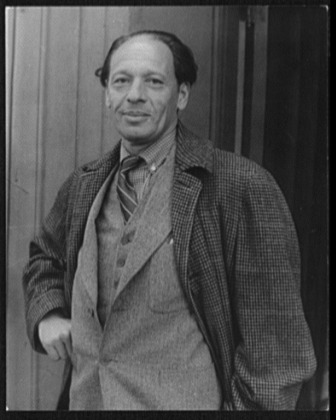people » Adolph Bolm
Adolph Bolm (1884-1951). Russian-born Dancer, choreographer and director
Adolph Rudolphovich Bolm was born in St Petersburg in 1884, and trained at the Imperial Ballet School under Tamara Karsavina’s father, Platon Karsavin. Bolm entered the Imperial Russian Ballet when he graduated in 1904. Between 1908 and 1909 he toured in Europe, including in London, with a troupe of dancers led by Anna Pavlova, which he helped to organise. From 1909 until 1914, he was a member of Serge Diaghilev’s Ballets Russes, where he created the Polovtsian Chief in the Polovtsian Dances from Prince Igor and Pierrot in Le Carnaval, both choreographed by Mikhail Fokine. 1917 found him in the United States of America with the Ballets Russes and Vaslav Nijinsky, but without Diaghilev. Bolm sustained an injury whilst dancing in the ballet Thamar, and had to have lengthy treatment in America, where he remained for the rest of his professional life as both dancer and choreographer.
From 1918, Bom staged ballets for the Metropolitan Opera, New York, and the Chicago Civic Opera, as well as well as organising his own Ballet Intime in New York. With Ballet Intime he introduced ballet sequences for the cinema, his Krazy Kat supposedly a forerunner for Walt Disney’s Mickey Mouse. In 1929, Bolm’s Dance Macabre (to music by Saint-Saëns) was the first dance film made to synchronized orchestral music, while in 1932 his Iron Foundry was the first ballet created for a film (The Mad Genius).
In Washington DC in 1928, Bolm choreographed Apollon-Musagète to Igor Stravinsky’s music, with a cast including himself and Ruth Page, whom he had taught as a young girl back in 1917. Bolm was the first to choreograph to this music, which had been commissioned by the Library of Congress. Stravinsky had always intended the work for Diaghilev’s Ballets Russes and George Balanchine’s version later that year was to become the standard, danced and admired ever since. The following year Bolm moved to California, where he was the first ballet master for the San Francisco Opera Ballet when it was established in 1933. Until his retirement in 1947, Bolm worked both in California and New York. In 1940, with his Peter and the Wolf, he was one of the founding choreographers of New York’s Ballet Theatre (later American Ballet Theatre). His final stage appearance was as the Moor in Fokine’s Petrushka at the Hollywood Bowl in 1943, and his last choreography was for Franz Lizst’s Mephisto Waltz for the San Francisco Ballet in 1947. Bolm died in Hollywood in 1951.

